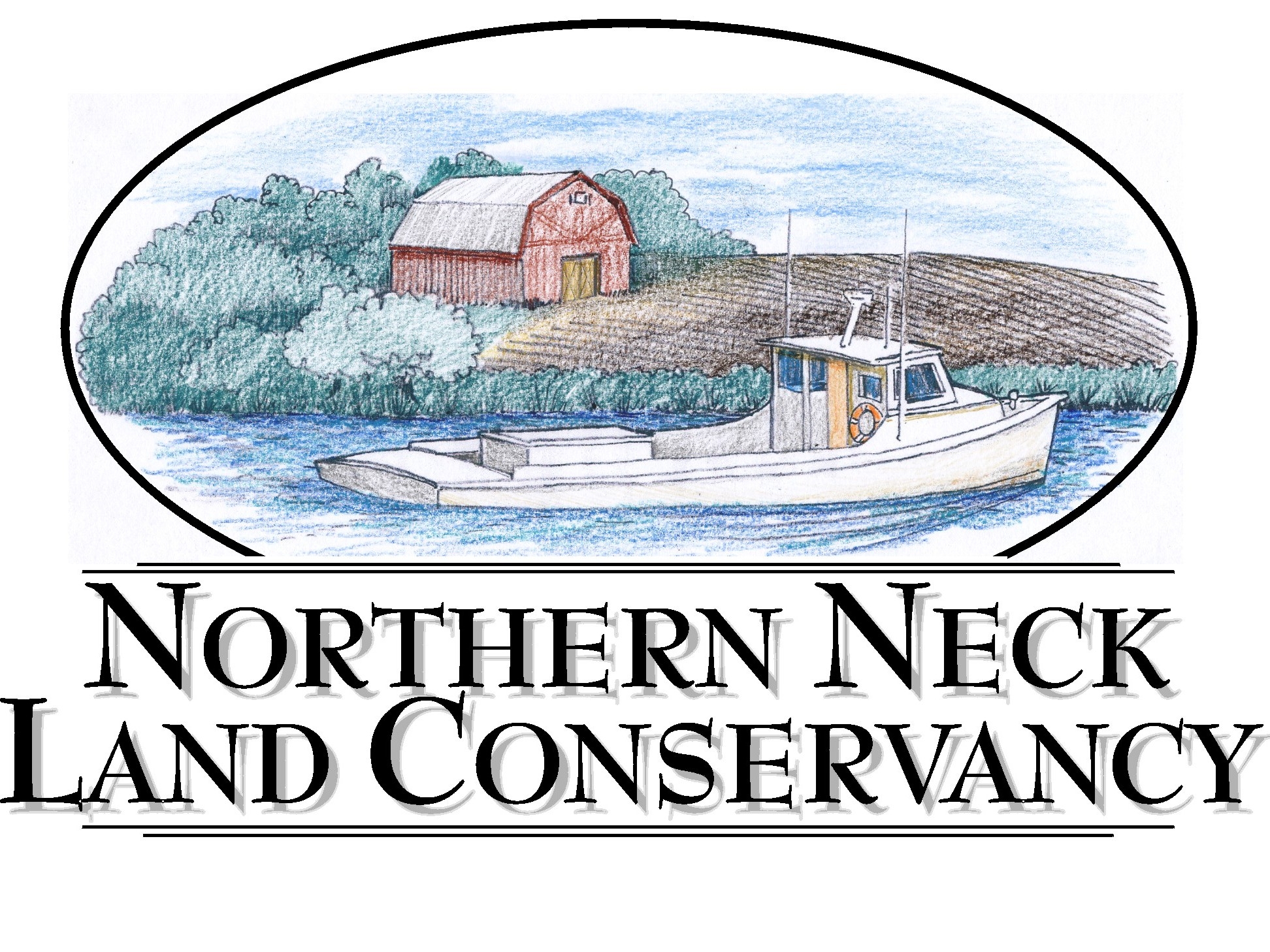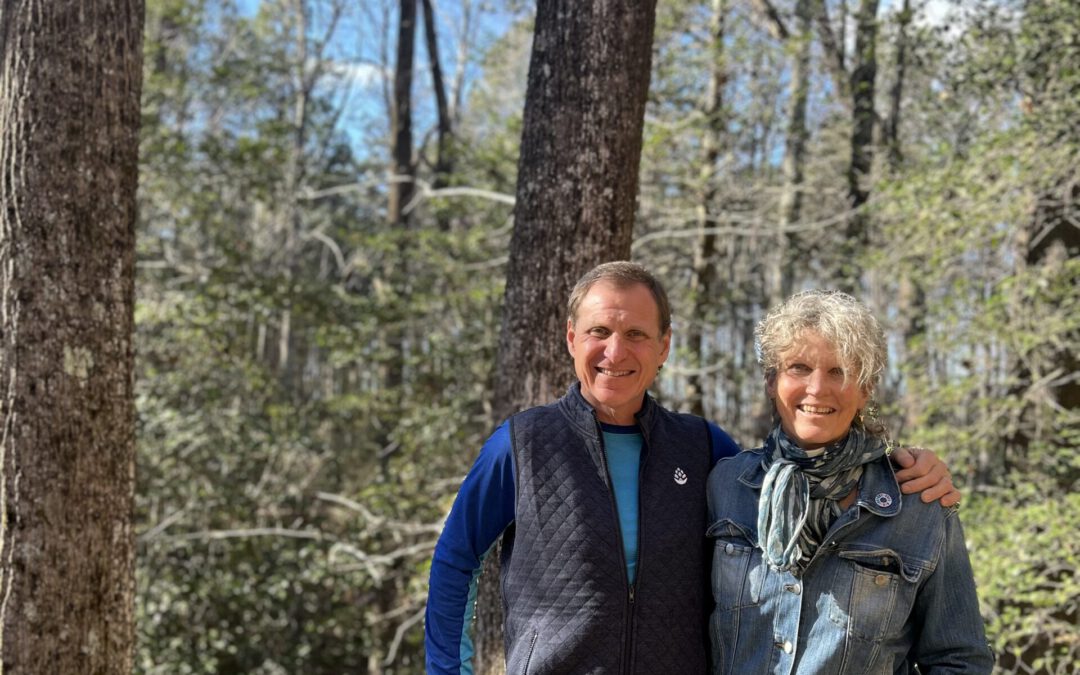By Rob Hedelt, board member of the Northern Neck Land Conservancy
When Marc Gorelick and Lynn Broaddus were considering big career changes years ago—moving from Wilmington, Delaware to new jobs in the Midwest —there was one other key decision to make.
The accomplished professionals—he a pediatric emergency physician, she an ecologist—were also considering purchasing two acres of land on Mundy Point, part of a sort of family compound they’d loved to visit and camp on through the years.
“Marc asked if it made sense to be buying land in Virginia if we were about to move to Wisconsin,” said Broaddus, who’d grown up in Northern Virginia. “My reply: I’m not moving to Wisconsin unless I have a piece of Virginia.’”
The couple that shares what Gorelick calls “the value of wanting to protect the land,” started by purchasing two acres of land from a cousin who’d bought it from Lynn’s father. Though they’ve since moved further west to Minnesota, they are grateful that twenty-five years ago they got “a piece” of Lynn’s home state.
After purchasing two additional small parcels and building a small, energy efficient home there, during the pandemic the adjacent undeveloped 86 acres came on the market. While it was a stretch financially, they wanted to make a go of it, mainly to protect their view and to preserve the woodlands around them.
They ended up making the leap, hoping that they would eventually be able to place a conservation easement on the new property through the Northern Neck Land Conservancy. In 2024 they were able to make that happen. The easement ensures that the land, which has roughly a third of a mile shoreline on the Hampton Hall Branch of the Yeocomico River, will never be developed as a string of houses along the beautiful waterway.
Gorelick, who now runs a children’s healthcare system in the Twin Cities, said that having the easement is an expression of their values, which are also shared by their two sons. Broaddus said that securing the easement through the Land Conservancy made sense to the family because they have no desire to develop the property, or see it developed in the future, even if it’s sold by either generation in the future.
She noted that it was financially “hugely advantageous” to put the land in a conservation easement, and that if they or their children ever have to sell the land, the adjacent property is still protected. The financial advantage comes because the conservation easement earns them considerable tax credits, which they can either use themselves or sell to others.
“We’re also interested in water quality and biodiversity,” said Broaddus, who through the years has worked doing stewardship for The Nature Conservancy, before shifting to being a Riverkeeper®, and eventually consulting on sustainable water infrastructure and practices. “Mike Downing farms [the open land on] our property, and we feel good about working with him.”
Gorelick said that even though the woodland on the property isn’t a virgin forest, “We want it to be this way going forward. Once you lose it, it’s gone.”
Broaddus, whose aunt and uncle live on an adjoining property, said she grew fond of the Northern Neck as a youngster, coming with her parents to camp on property at Mundy Point and then later at a spot not too far away in Lewisetta.
“Camping–on the Northern Neck and elsewhere– gave me a good appreciation for the sanctity of wild spaces as well as taking water seriously, and how little we actually need to take care of the daily tasks of life,” she said. “When you have to hand-carry fresh water to your camp site, or have a limited supply on a boat, you are careful not to use a drop more than needed.”
She said her father’s family were from the Walkerton area in King and Queen County, and that he liked having a similar sort of spot on the Northern Neck where her siblings or cousins could come enjoy the pristine nature of the land, the waterfront and being together.
She and Gorelick said respect for the land is something they’ve passed down to their sons, who still live in the Midwest. But she said the conditions of the easement would allow them to build a second house on the property to house them on the visits they hope will come.
“We have fit seven or eight people in our 900-square foot house, but it gets pretty cozy,” said Gorelick. “With the other house, they could come down and work remotely for a week or two while they’re here.”
The couple’s focus on the property right now involves creating trails through it, having Downing farm the section in crops and removing invasive species as time allows.
“I’m slowly trying to remove the Chinese privet and honeysuckle from the woods,” said Broaddus. While that can feel like a daunting task at times, she noted that, “on this trip down, I saw a spot where I’d gotten the honeysuckle out, and there were orchids growing there now. Last spring when we were here, looking out from our deck, you just saw privet. Now I can see a redbud blooming there.”
She and Gorelick said that while there might be other work to come, right now, they just love being part of what they recognize as a very special place.


Recent Comments